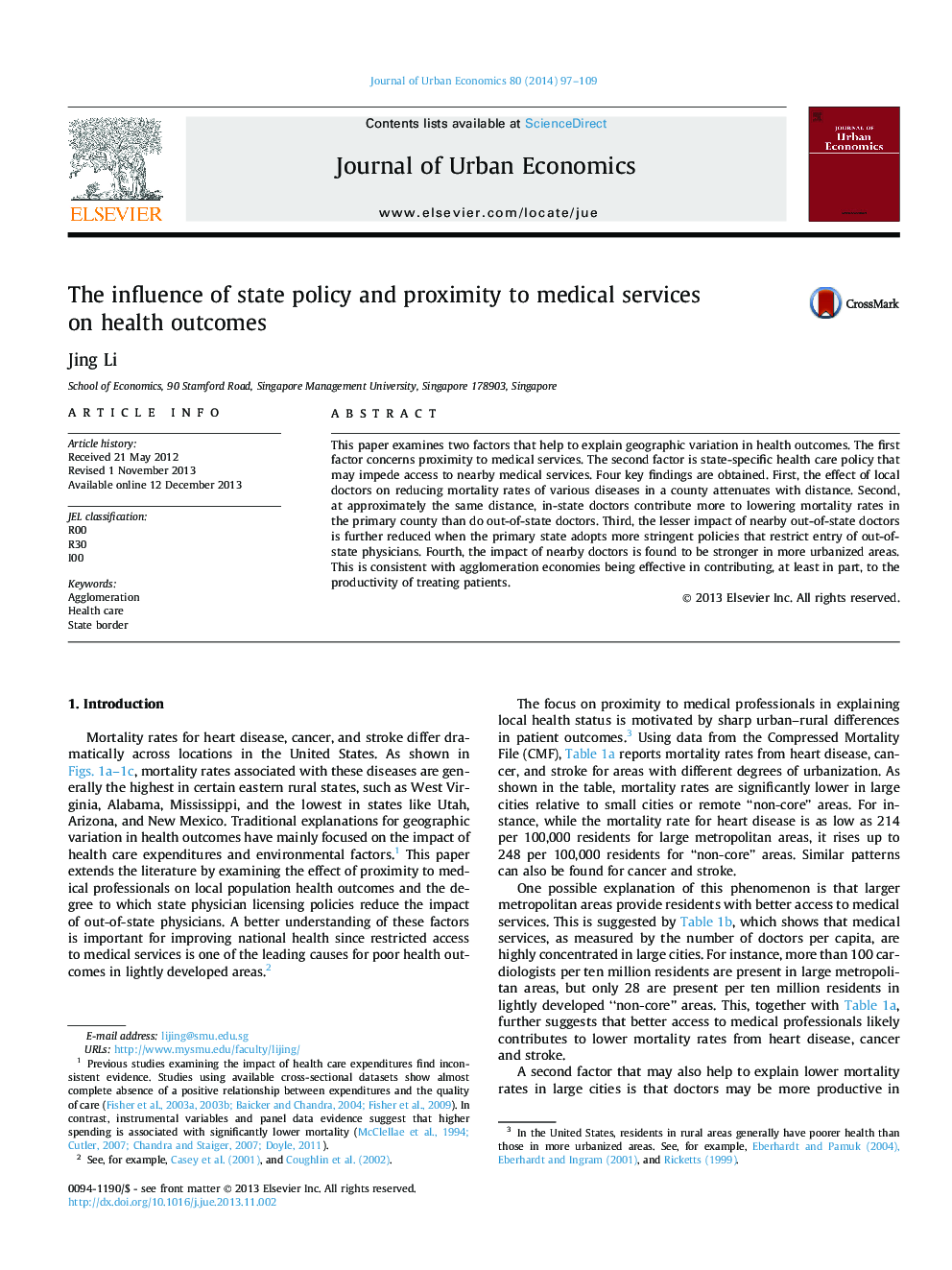| Article ID | Journal | Published Year | Pages | File Type |
|---|---|---|---|---|
| 970747 | Journal of Urban Economics | 2014 | 13 Pages |
This paper examines two factors that help to explain geographic variation in health outcomes. The first factor concerns proximity to medical services. The second factor is state-specific health care policy that may impede access to nearby medical services. Four key findings are obtained. First, the effect of local doctors on reducing mortality rates of various diseases in a county attenuates with distance. Second, at approximately the same distance, in-state doctors contribute more to lowering mortality rates in the primary county than do out-of-state doctors. Third, the lesser impact of nearby out-of-state doctors is further reduced when the primary state adopts more stringent policies that restrict entry of out-of-state physicians. Fourth, the impact of nearby doctors is found to be stronger in more urbanized areas. This is consistent with agglomeration economies being effective in contributing, at least in part, to the productivity of treating patients.
